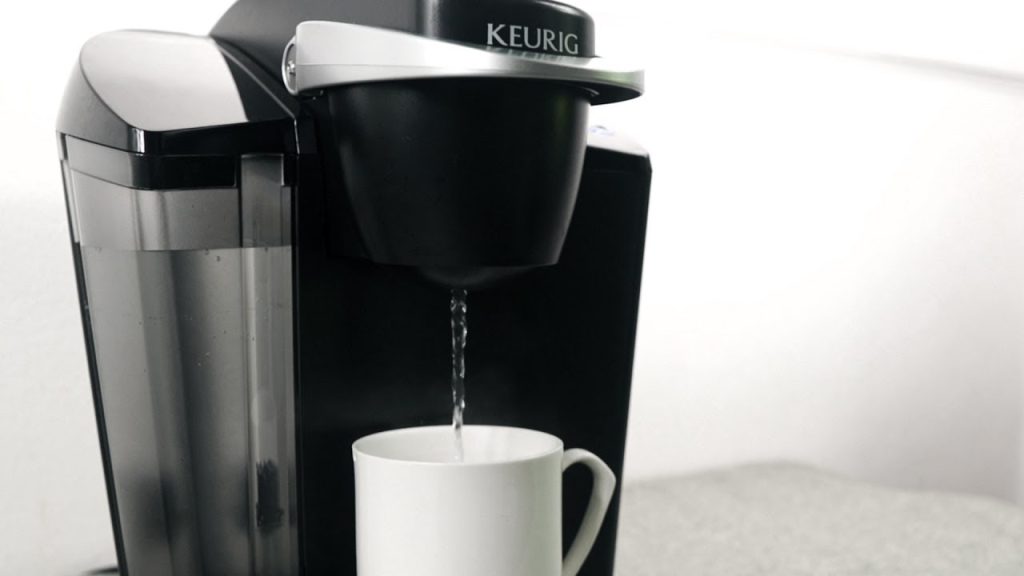Using a Keurig coffee maker is a convenient and efficient way to brew your favorite cup of coffee at home. Whether you're a coffee aficionado or just starting out, understanding how to properly use a Keurig machine is essential for a delicious cup of coffee. Here is a step-by-step guide to help you make the most of your Keurig coffee maker:
1. Initial Setup and Preparations: Before you start brewing, ensure your Keurig is plugged in and ready to use. Familiarize yourself with the different buttons and functions on the machine.
2. Loading the Water Reservoir: Fill the water reservoir with clean, filtered water until it reaches the desired level indicated on the machine. Avoid overfilling to prevent water leakage during brewing.
3. Inserting the Coffee Pod: Lift the handle on the Keurig and place a compatible coffee pod, also known as a K-Cup, into the pod holder. Close the handle firmly until it clicks into place.
4. Adjusting Brewing Settings: Depending on your preference, you can adjust the brewing settings such as cup size and brew strength using the buttons on the Keurig. Refer to the machine's user manual for specific instructions on adjusting these settings.
5. Starting the Brewing Process: Position your cup or mug on the drip tray and select the desired cup size. Press the brew button to start the brewing process. The machine will puncture the coffee pod and hot water will pass through, brewing your coffee.
6. Removing and Disposing of Used Coffee Pods: After brewing, lift the handle and carefully remove the used coffee pod by disposing of it in a designated bin. Be cautious as the pod may still be hot.
To ensure optimal performance, it's important to troubleshoot common issues that may arise with your Keurig coffee maker. This includes addressing brewing problems, resolving water leakage issues, and following proper cleaning and maintenance tips.
Lasty, here are some tips and tricks for getting the best cup of coffee with your Keurig coffee maker. Experiment with different coffee pod flavors and strengths to find your perfect blend. Clean your machine regularly to keep it in top condition. Use high-quality water for the best taste, and don't forget to explore additional features or accessories that may enhance your brewing experience.
By following these steps, troubleshooting issues, and implementing useful tips and tricks, you can enjoy a delicious cup of coffee every time with your Keurig coffee maker.
Key takeaway:
- Using a Keurig coffee maker is convenient: Keurig coffee makers provide a simple and efficient way to brew coffee with just a few steps, making it easy for anyone to enjoy a cup of coffee.
- Proper setup and preparation are essential: By following the step-by-step guide provided, users can ensure that their Keurig coffee maker is set up correctly and ready to brew a delicious cup of coffee.
- Maintaining and troubleshooting the machine is important: Knowing how to address and prevent common issues like brewing problems, water leakage, and cleaning will help users keep their Keurig coffee maker in good working condition for a longer time.
Step-by-Step Guide on How to Use a Keurig Coffee Maker
Get ready to become a Keurig coffee master! In this handy guide, we'll take you through each step of using a Keurig coffee maker. From setting up the machine to disposing of used coffee pods, we've got you covered. Get ready to load that water reservoir, insert that coffee pod, and adjust those brewing settings like a pro. So grab your favorite mug and let's dive into the world of hassle-free, delicious coffee with your Keurig machine.
1. Initial Setup and Preparations
Setting up and preparing your Keurig coffee maker is crucial for a flawless cup of coffee every time. Here's a step-by-step guide to assist you with the initial setup and preparations:
- Unbox and eliminate all packaging materials.
- Position the coffee maker on a stable surface near an electrical outlet.
- Fill a measuring cup with fresh water, considering the size of your coffee maker's water reservoir. Refer to the user manual for capacity details.
- Open and remove the lid of the water reservoir.
- Carefully pour the measured water into the reservoir, making sure not to overfill.
- Safely place the water reservoir back onto the coffee maker.
- Plug in and switch on the coffee maker.
- Allow a few minutes for the coffee maker to preheat.
- While it's preheating, place your preferred coffee mug on the drip tray.
- Once preheated, the coffee maker is now ready to be used.
Now that you have successfully completed the initial setup and preparations of your Keurig coffee maker, you can brew a delicious cup of coffee. For specific brewing instructions, adjusting settings, and discarding used coffee pods, please refer to the user manual.
One morning, John woke up feeling groggy and in need of a caffeine boost. He had recently purchased a new Keurig coffee maker and was excited to give it a try. Following the provided guide, John quickly completed the initial setup and preparations of his coffee maker. He chose his favorite coffee pod, adjusted the brewing settings to his preferred strength, and eagerly awaited his cup of coffee. As the aroma filled the air, John couldn't help but smile. The initial setup and preparations ensured a hassle-free experience and a perfect start to his day.
2. Loading the Water Reservoir
To load the water reservoir of your Keurig coffee maker, follow these steps:
1. Remove the water reservoir: Lift it out of the coffee maker, ensuring it is empty and clean.
2. Clean the reservoir: Rinse it with water to remove residue or impurities for better coffee taste.
3. Fill the reservoir with water: Use your preferred water source and fill it with the desired amount, avoiding overfilling to prevent overflow during brewing.
4. Place the reservoir back: Carefully put the water reservoir back into its position on the coffee maker, ensuring it is securely in place to avoid leaks.
5. Check the water level indicator: Make sure the indicator aligns with the appropriate water level, ensuring enough water for brewing without overflowing.
6. Close the lid: Once the water reservoir is properly positioned, securely close the lid to maintain optimal brewing conditions.
7. Power on the coffee maker: Press the power button to start the coffee maker, preparing it to brew your favorite cup of coffee.
By following these steps, you can easily load the water reservoir of your Keurig coffee maker and enjoy a delicious cup of coffee every time. Remember to regularly clean and refill the reservoir for optimal performance and taste.
3. Inserting the Coffee Pod
Inserting the coffee pod is a simple process when using a Keurig coffee maker. To begin, open the lid of your Keurig coffee maker. Carefully remove the coffee pod from its packaging. Inside the brewing chamber, you will find the pod holder. Take the coffee pod and place it into the pod holder with the flat side facing up. Make sure to center it and fully insert it. Once the coffee pod is securely in place, close the lid. Now, you are ready to start the brewing process. To enhance your coffee experience, consider the following tips: choose your favorite coffee blend or flavor, experiment with the different brewing sizes and settings to suit your preferences, regularly clean and maintain your Keurig coffee maker for optimal performance, and responsibly dispose of used coffee pods. By following these steps and suggestions, you can confidently insert a coffee pod into your Keurig coffee maker and enjoy a delicious cup of coffee whenever you desire.
4. Adjusting Brewing Settings
When using a Keurig coffee maker, it is important to adjust the brewing settings to suit your personal taste. By following these steps, you can easily customize your coffee experience:
- Choose the brewing strength: Keurig offers various strength options, allowing you to achieve a bolder or smoother flavor.
- Select the cup size: Determine the amount of coffee you desire by choosing from the options of 6, 8, 10, or 12 ounces. Keep in mind that larger cup sizes may result in a weaker brew.
- Adjust the temperature: If your Keurig model allows temperature adjustment, it's worth experimenting with different settings to find the perfect balance between flavor and heat. Higher temperatures enhance extraction for a stronger taste, while lower temperatures produce a milder flavor.
- Customize other settings: Depending on your Keurig model, there may be additional brewing settings to explore. These could include options for brewing time, altitude adjustments, or specific settings for different coffee pods.
To achieve the best cup of coffee with your Keurig machine, here are some additional suggestions:
- Experiment with different brewing settings to discover your preferred flavor and strength.
- Consider the type of coffee pods you use, as they may perform differently with specific brewing settings.
- Take note of the changes you make to the settings and their impact on the taste, so you can fine-tune your future brewing experiences.
- Regularly clean your Keurig machine to ensure optimal performance and the best tasting coffee.
- Always use high-quality and fresh coffee pods for the best results.
Remember, adjusting the brewing settings allows you to create a personalized coffee experience that suits your taste. So go ahead and explore the options available on your Keurig coffee maker to enjoy a perfectly brewed cup every time.
5. Starting the Brewing Process
Starting the brewing process on a Keurig coffee maker is a breeze. To brew your favorite cup of coffee, just follow these steps:
1. Begin by filling the water reservoir with fresh water, making sure that the water level falls within the recommended range for your desired cup size.
2. Next, securely place a coffee pod into the pod holder of the Keurig machine.
3. Lower the handle to close the pod holder, ensuring that it clicks into place and properly punctures the pod for brewing.
4. If your Keurig model offers brewing size adjustments, simply choose your preferred cup size.
5. Now, press the "brew" button on the Keurig machine to kickstart the brewing process. The machine will heat the water and dispense it over the coffee pod.
6. Be patient as the brewing process unfolds. The duration will vary depending on the cup size and your specific Keurig model.
7. Once the brewing is complete, carefully remove the cup from the drip tray.
8. If desired, you can add milk, sugar, or any other ingredients to customize the taste of your coffee.
9. Savor and enjoy your freshly brewed cup of coffee to the fullest!
By following these easy steps, you can be confident that your Keurig coffee maker will craft a delectable cup of coffee every time.
6. Removing and Disposing of Used Coffee Pods
To remove and dispose of used coffee pods from a Keurig coffee maker, follow these steps:
- After brewing coffee, wait for the pod to cool before handling it.
- Lift the handle of the Keurig coffee maker to open the chamber where the pod is located.
- Carefully grab the used coffee pod using your fingers or a pair of tongs.
- Pull the pod out of the chamber, avoiding contact with hot coffee grounds.
- Place the used pod in a designated waste bin or container for disposal.
- If your Keurig coffee maker has a removable pod holder, take it out and empty any remaining coffee grounds into the trash.
- Rinse the pod holder under running water to remove residue and coffee particles.
Note that coffee pods are not biodegradable, so dispose of them according to local waste management guidelines. Some pods may be recyclable, so check the packaging for recycling symbols or instructions. Consider participating in recycling programs offered by coffee pod manufacturers.
Concerns about the environmental impact of coffee pods have led to the development of biodegradable and compostable alternatives. These eco-friendly options aim to reduce waste and minimize the environmental footprint of single-serve coffee brewing.
While removing and disposing of used coffee pods is simple, be mindful of the waste generated and explore more sustainable alternatives. Consider using reusable coffee pods or choosing coffee brewing methods that produce less waste.
Remember, every small step toward mindful consumption and waste reduction contributes to a healthier planet for future generations. Let's make conscious choices and enjoy our coffee responsibly.
Troubleshooting Common Issues with Keurig Coffee Makers
Are you tired of your Keurig Coffee Maker giving you trouble? In this section, we'll tackle the common issues that Keurig users often encounter. From brewing problems to water leakage and cleaning tips, we've got you covered. Say goodbye to lukewarm coffee and messy countertop disasters. Get ready to troubleshoot like a pro and make every sip a satisfying one. Let's dive in and solve those Keurig woes together!
1. Brewing Problems
Brewing problems can sometimes arise with a Keurig coffee maker, but fear not, there are simple solutions to help you tackle them. Allow me to guide you through some of the most common brewing problems and how to resolve them:
1. Weak Coffee: If your coffee tastes weak and watered down, it could be due to using too much water and too few coffee grounds. Aim for 1-2 tablespoons of grounds per 6 ounces of water. You may also want to adjust the brewing settings or try a stronger coffee blend.
2. Coffee Grounds in the Cup: Discovering coffee grounds in your cup can be a result of using the wrong size or type of pod. Make sure you use the correct pod size for your specific Keurig model and ensure it is securely inserted.
3. Coffee Not Brewing: In the event that your Keurig refuses to brew altogether, there are a few steps you can take. First, check the water level in the reservoir and make sure the machine is properly plugged in and turned on. If the problem persists, try descaling the machine to get rid of any mineral buildup.
4. Slow Brewing: If your Keurig takes longer than usual to brew, it might be due to a clogged needle. Fear not, there is a simple fix! Clean the needle assembly using a paper clip or a needle to remove any obstructions that might be causing the slowdown.
5. Inconsistent Brew Size: If your Keurig fails to consistently brew the cup size you have selected, take a moment to check the programming settings and reset them if necessary. Descaling the machine may also help improve the water flow and fix this issue.
By addressing these common brewing problems, you will soon be able to relish a delicious cup of coffee with your beloved Keurig. And remember, always follow the manufacturer's instructions for proper cleaning and maintenance to ensure your machine remains in optimal condition.
2. Water Leakage
When using a Keurig coffee maker, water leakage can be frustrating. Follow these steps to troubleshoot and resolve the issue:
1. Check the water reservoir: Ensure the reservoir is properly attached and the lid is tightly closed to prevent water leakage during brewing.
2. Inspect the water inlet needle: Make sure the needle at the bottom of the K-Cup holder is clean and free from debris. Use a paper clip to gently unclog it if necessary.
3. Examine the K-Cup holder: Clean any residue or coffee grounds from the holder to prevent buildup. Remove and thoroughly clean it before reinserting.
4. Check the exit needle: Inspect for blockages or coffee grounds that may be hindering water flow. Use a paper clip to clear any obstructions.
5. Monitor the brew size: Select a smaller brew size if water leakage persists. Choosing a larger size can cause overflow.
6. Contact customer support: If the issue continues, reach out to Keurig's customer support for further assistance.
By following these steps, you can effectively troubleshoot and address water leakage in your Keurig coffee maker. Remember to regularly clean and maintain your machine to prevent future problems.
3. Cleaning and Maintenance Tips
Cleaning and Maintenance Tips:
Properly clean and maintain your Keurig coffee maker to ensure optimal performance and prolong its lifespan. Follow these steps:
1. Regular descaling: Descaling your Keurig coffee maker every 3-6 months, or more frequently if you have hard water, is essential. This process removes mineral deposits that can affect taste and performance. You can use a descaling solution or a mixture of vinegar and water. Simply fill the water reservoir with the descaling solution, run a brew cycle without a coffee pod, then repeat with clean water for rinsing.
2. Clean the water reservoir: It is important to regularly clean the water reservoir to prevent bacteria or mold buildup. To do this, remove the reservoir from the coffee maker, wash it with warm, soapy water, rinse it thoroughly, and dry it before reattaching.
3. Clean the brew basket and K-Cup holder: Removing the brew basket and K-Cup holder from the coffee maker and rinsing them under warm running water will help remove coffee grounds or residue. You can also use a small brush or toothbrush to clean hard-to-reach areas. Make sure to dry them before reinserting.
4. Wipe the exterior: To remove stains or spills, it is recommended to regularly wipe the exterior of your Keurig coffee maker with a damp cloth. Be cautious and avoid using abrasive cleaners or scrubbing vigorously, as this may damage the surface.
5. Clean the drip tray: Removing the drip tray and rinsing it under warm water is necessary. If needed, use a mild detergent. Make sure to dry it before placing it back into the coffee maker. It is important to empty and clean it regularly to prevent overflow or leaks.
6. Replace the water filter: If your Keurig coffee maker has a water filter, it is advisable to replace it as recommended by the manufacturer. This will help maintain the quality of your coffee by filtering impurities from the water.
By following these cleaning and maintenance tips, your Keurig coffee maker will continue to brew delicious coffee and remain in excellent working condition for years to come.
Tips and Tricks for Getting the Best Cup of Coffee with a Keurig Coffee Maker
Getting the best cup of coffee with a Keurig coffee maker requires some tips and tricks. Here are some suggestions:
- Incorporate
- Incorporate
- Incorporate
- Incorporate
- Incorporate
- Incorporate
- Incorporate
- Incorporate
- Incorporate
- Incorporate
By following these tips and tricks for getting the best cup of coffee with a Keurig coffee maker, you can ensure that you get the perfect cup every time. Enjoy exploring different flavors and brewing techniques to find your ideal blend!
Some Facts About How to Use a Keurig Coffee Maker:
- ✅ Before using a Keurig for the first time, it is important to clean and prepare it according to the manufacturer's instructions. (Source: The Coffee Maven)
- ✅ The Keurig coffee maker uses either the Keurig 1.0 or Keurig 2.0 brewing system. (Source: The Coffee Maven)
- ✅ To brew coffee using a Keurig, select your preferred Folgers K-Cup pod and place it inside the coffee maker. (Source: Folgers Coffee)
- ✅ Use fresh, distilled, or filtered water to fill the reservoir of the Keurig coffee maker for the best taste. (Source: Folgers Coffee)
- ✅ By selecting the desired brew button based on the size and strength of coffee you prefer, the Keurig coffee maker will brew your coffee within seconds. (Source: Folgers Coffee)
Frequently Asked Questions
How do I set up a Keurig coffee maker?
To set up a Keurig coffee maker, begin by plugging it into a grounded outlet. Remove any protective films and rinse the water reservoir with clean water. Fill the reservoir and place it back in the machine. Press the power button to start heating the water and run a brewing cycle without a K-Cup to discard the water.
What should I do if my Keurig coffee maker is not brewing?
If your Keurig coffee maker is not brewing, try troubleshooting by checking the water entry point for any clogs or blockages. Ensure that the machine is plugged in and that the power button is pressed. If the issue persists, consult the user manual or contact Keurig customer support.
How often should I clean my Keurig coffee maker?
It is important to clean your Keurig coffee maker regularly to maintain its performance. Clean the components by wiping them down with a mixture of water and vinegar to remove rancid oils. Change the charcoal water filter every 2 months or 1,000 oz, and descale the machine every 3-6 months or more frequently if you have hard water.
Can I use tap water in my Keurig coffee maker?
Yes, you can use tap water in your Keurig coffee maker. If you prefer filtered water for better taste, you can use distilled or filtered water instead. If your Keurig machine comes with a charcoal water filter kit, follow the instructions to rinse and install the filter.
What should I do if the blinking light appears on my Keurig coffee maker?
If the blinking light appears on your Keurig coffee maker, it typically indicates a specific issue or notification. Consult the user manual for your specific model to understand the meaning of the blinking light and follow the recommended troubleshooting steps to resolve the issue.
Where can I find more information about using my Keurig coffee maker?
For more information on using your Keurig coffee maker, you can visit the Keurig website. They provide detailed instructions specific to each model, as well as helpful tips and troubleshooting guides to ensure you have a smooth brewing experience.

.jpg)




